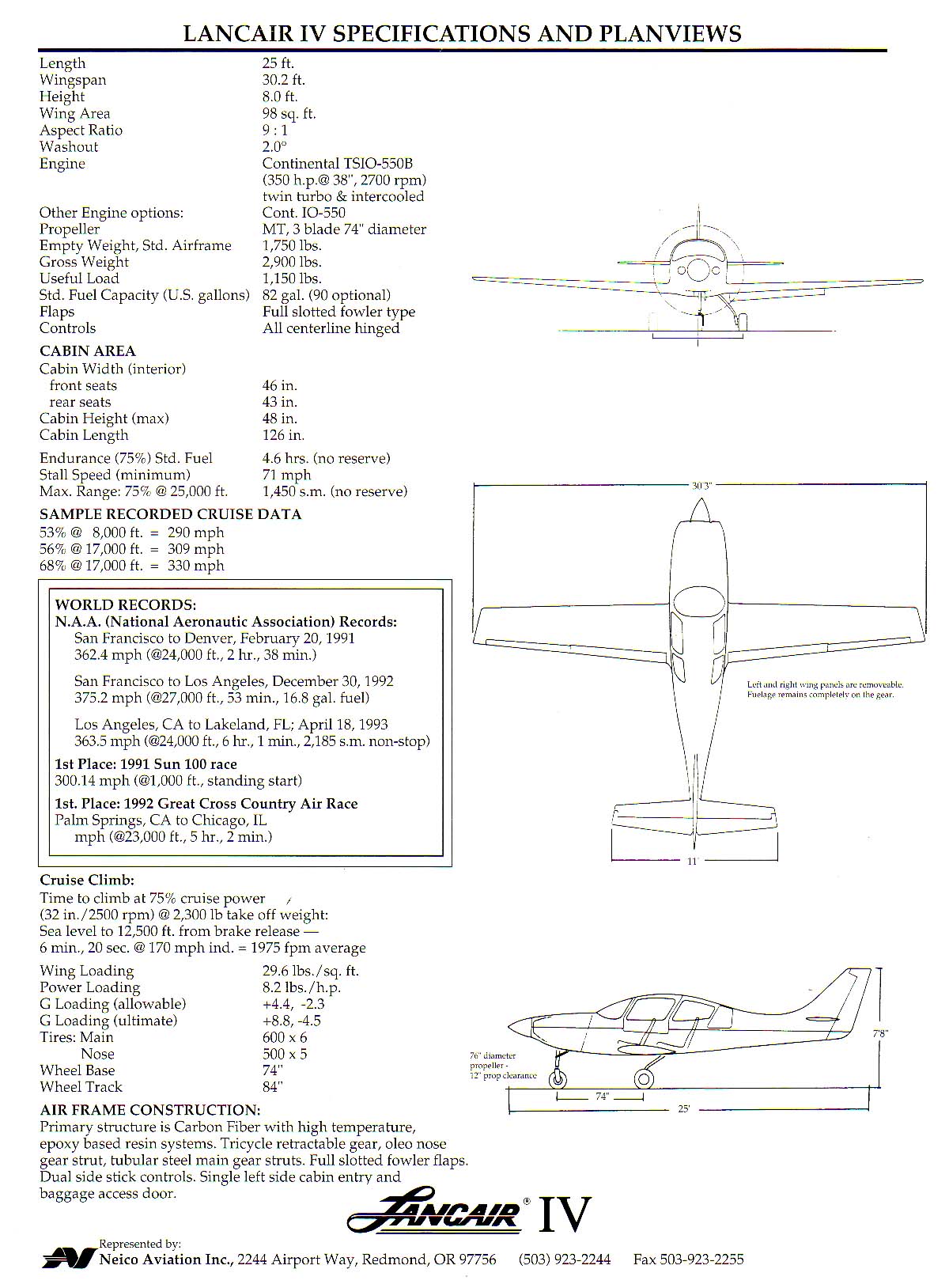|
|
My thanks to Roberto d'Enginero for providing the
calculations that substantiate the points that I was trying to make in
my previous post, those being:
1) You can load an aircraft well past its listed gross weight and it
will still fly.
2) The more weight you add the less safe the situation.
3) You cannot fly an airplane with a stall speed greater than its
maneuvering speed Va.
Whether the ultimate gross weight is 18,000 or 28,500 pounds is
irrelevant to the point. In the spirit of Bob's post I should point out
that Bob is using the wing lift and the gross weight interchangeably.
This is not correct (I'll take those quarters back). Using the 18,000
pound number as the ultimate gross weight is, by design, calculated to
be conservative. As Bob pointed out, the load carried IN the wings
(including the wing structure) is not factored . Also not considered is
the lift generated by the fuselage, the vertical component of the
propeller thrust at high alpha and the effect of temperature on the
composite structure. Bob's assertion that the wings will clap at
18,000 pounds gross is very probably inaccurate and would require
empirical determination. Perhaps Roberto d'Testpilot would volunteer.
Bob writes " Brent
continues with the mythical 200% (8.8G) ultimate load factor, which
doesn't exist and never has!"
Ouch, this one is gonna hurt. I would direct you to the Lancair
published flyer circa 1992 attached. Next to G Loading (ultimate) you
will see the "mythical" +8.8. Also note the 2,900 pound gross weight
and 82 gallons of fuel.
Bob also writes "My
apologies to the persons named, it's not the purpose of my posting to
embarrass anyone." Not to worry, I am offended by people with
malicious intent , not by ones who are well meaning but misinformed. I
suspect the only one you have embarrassed is yourself.
People who live in false premiss(es) shouldn't throw conclusions.
My theory is this. The original IV was designed with a 2,900 lb
gross and a 2.0 to 1 safety factor. A IV wing weighs about 180 Lbs all
up or 360 Lbs the pair and both will carry 492 Lbs of fuel (original 82
gallons) for a total of 852 pounds of wing and fuel and the balance of
2048 pounds in the fuselage. It is the fuselage that is trying snap off
the wings so if you reduce the factor of safety to ultimate failure
from 2.0 to 1.5 (Part 23.303 spam can margins) you get a new fuselage
weight of 2731 lbs. Add back the wing weight and you get 3583 Lbs
gross weight. Interesting close to the 3550 now published.
The increase in gross weight from 2,900 lbs to 3,550 lbs has come at
the cost of a reduction in the factor of safety from ~2.0 to ~1.5. and
an increase in stall speeds.
Lancair DID do an empirical wing strength test, back when the earth was
still cooling, and as I recall (and I am probably wrong) the wing
failed at ~11 Gs. This would correspond to a fuselage weight of 22,528
and a gross weight of 23,380 lbs. Factor in fuselage lift and vertical
thrust component and 28,500 isn't so far off the mark. However, a test
IS the best way to know for sure so, Roberto, if you want your quarter,
do the test and send me the results. If the wings come off at 23,250
Lbs (half way between our numbers) take off weight, you win.
Is a gross weight of 3,550 Lbs safe? Safety is relative and if you load
your plane more than the situation will allow your relatives will find
out.
Regards
Brent Regan

Lancair Flyer.jpg
|
|